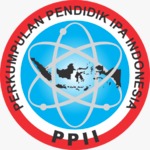Development of Physics Learning Tools Based on the STEM-Creative Problem Solving Model to Increase Students' Scientific Literacy and Creativity
DOI:
https://doi.org/10.29408/kpj.v7i3.24197Keywords:
Learning Tools, STEM-Creative Problem Solving, Scientific Literacy, CreativityAbstract
Scientific literacy and creativity are two of several competencies that are very important to have now and in the future. However, referring to the data released by TIMSS and the results of previous research, shows that the scientific literacy and creativity of students in Indonesia are both low. This research aims to develop a STEM-Creative Problem Solving model learning tool to increase students' scientific literacy and creativity. This type of research is research & development. The development procedure in this research uses a 4D mode; define, design, develop, and disseminate. The instrument for knowing expert assessments of learning tools that have been developed uses validation sheets. From the results of the assessment of 3 (three) experts, it shows that the learning tools that have been developed have high validity with an average score for learning plans of 3.83 and an average validity score for student worksheets of 3.81. Thus, it can be concluded that the learning tools that have been developed are suitable to be continued to the limited trial stage (effectiveness test) and disseminated widely.
References
Busyairi, A., & Sinaga, P. (2015, October). Profil keterampilan pemecahan masalah secara kreatif siswa SMA pada pokok bahasan listrik dinamis. Prosiding Seminar Nasional Fisika (E-JOURNAL) (Vol. 4, pp. SNF2015- IV). Retrieved from: https://journal.unj.ac.id/unj/index.php/prosidingsnf/article/view/5020
Busyairi, A., & Sinaga, P., (2015). Strategi pembelajaran creative problem solving (CPS) berbasis eksperimen untuk meningkatkan kemampuan kognitif dan keterampilan berpikir kreatif, Jurnal pengajaran MIPA, 20 (2), 133-143. Retrieved from: https://garuda.kemdikbud.go.id/documents/detail/461865
Clegg, B. dan Brich, P. (2006). Instan Creativity: 76 Cara Instan Meningkatkan Kreativitas. Jakarta: Erlangga.
Isaksen, S. G. (1995). On the conceptual foundations of creative problem solving. a response to magyary beck. Creative of Inovation Managemen, 4 (1), 1628–1635. Doi: https://doi.org/10.1111/j.1467-8691.1995.tb00202.x
Jones, & Zanker, N. P. (2013). Applying laser cutting techniques through horology for teaching effective STEM in design and technology. Design and Technology Education, 18 (3), 21–34. Retrieved from: https://files.eric.ed.gov/fulltext/EJ1119599.pdf
Kandemir, M. A. dan dan Gur, H. (2009). The use of creative problem solving scenarios in mathematics education: views of some prospective teachers. Procedia- Social and Behavioral Sciences, 1 (1), 53–63. Doi: https://doi.org/10.1016/j.sbspro.2009.01.286
Kusuma, Y. (2010). Creative Problem Solving. Tanggerang: Rumah Pengetahuan.
Meiarti, D. (2021). Profil Keterampilan Berpikir Kreatif Peserta Didik SMK, Jurnal Inovasi Pendidikan Fisika dan Riset Ilmiah, 5 (2), 116-121. Doi: https://doi.org/10.30599/jipfri.v5i2.684
Rapika, D., Salsabila, H., Lintang, M., Lestari, S., & Prayitno, B.A., (2018). Profil Keterampilan Berpikir Kreatif Siswa di Salah Satu SMP Negeri Surakarta, BIOSFER Jurnal Biologi dan Pendidikan Biologi, 3 (1), 13-19. Retrieved from: https://www.journal.unpas.ac.id/index.php/biosfer/article/download/981/1085
Silver dan Edward A. (1997). Fostering creativity through instruction rich in mathematical problem solving and thinking in problem posing. International Reviews on Mathematical Education, 29 (3), 75-80. Retrieved from: https://link.springer.com/article/10.1007/s11858-997-0003-x
Simbolon, H. Simbolon, M. R., & Harahap, F. (2019). An Analysis of Students’ Scientific Literacy Skillsin State Senior High Schools throughout Central Tapanuli District. Advances in Social Science, Education and Humanities Research, 384, 105-109. Retrieved from: https://www.atlantis-press.com/article/125928346.pdf
Tayuda, L.A., & Siswanto, J. (2020). Profil Keterampilan Berpikir Kreatif Siswa SMA Negeri 3 Pemalang pada Konsep Solar Cell. Media Penelitian Pendidikan: Jurnal Penelitian dalam Bidang Pendidikan dan Pengajaran, 14 (2), 128-132. Doi: https://doi.org/10.26877/mpp.v14i2.5550
Thiagarajan, Sivasailam, and others (1974). Instructional Development for Training Teachers of Exceptional Children. Washinton DC: National Center for Improvement Educational System. Retrieved from: https://files.eric.ed.gov/fulltext/ED090725.pdf
Treffinger, D. J., Young, G.C., Selby, E.C., Shepardson, C. (2002). Assessing Creativity: A Guide for Educators. Florida: Center for Creative Learning Sarasota.
Treffinger, J. T., Isaksen, S. G. dan Dorval, B. S. (2006). Creative problem Solving. Texas: Prufrock Press Inc.
Treffinger, J. T., Selby, E.C., and Isaksen, S.G., (2008). Understanding individual problem-solving style: A key to learning and applying creative problem solving. Learning and Individual Differences, 18, (4), 390-401. Retrieved from: https://www.sciencedirect.com/science/article/abs/pii/S1041608007001343
Verawati, Y., Supriatna, A., Wahyu, W. & Setiaji, B. (2019). Identification of student’s collaborative skills in learning salt hydrolysis through sharing and jumping task design. International Conference on Mathematics and Science Education (ICMScE), Journal of Physics: Conference Series, 1-5. Doi: 10.1088/1742-6596/1521/4/042058
Wang, H.C, Chang, C.Y & Li, T.Y (2005). Automated Scoring for Creative Problem Solving Ability With Model Ideation-Explanation Modeling. Proceedings of The 13th International Conference On Computers In Education (ICCE2005). Retrieved from: https://www.researchgate.net/publication/221319374_Automated_Scoring_for_Creative_Problem_Solving_Ability_with_Ideation-Explanation_Modeling









